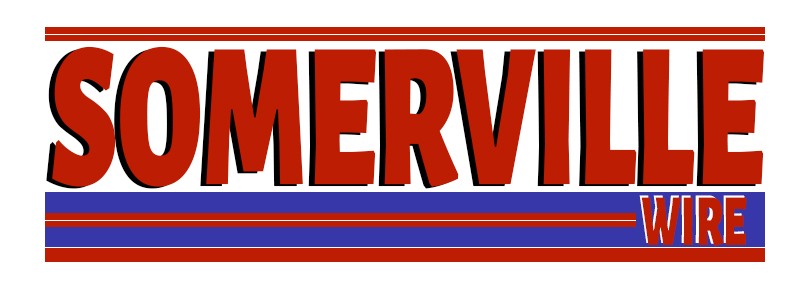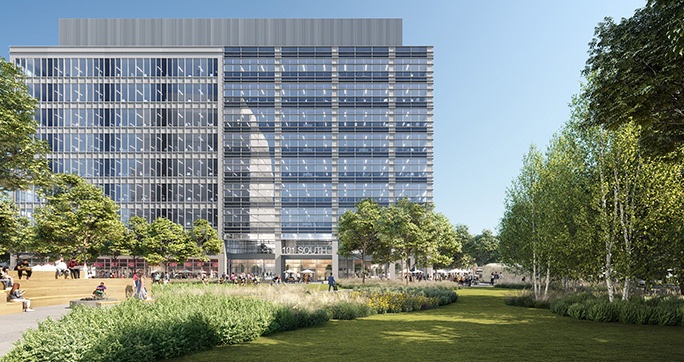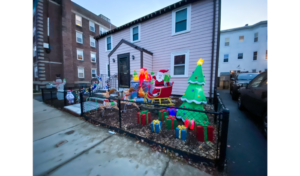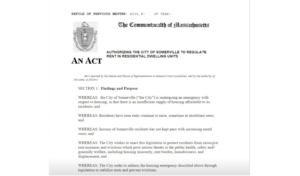Image by Boynton Yards
“The more we can encourage developers to build commercial properties, ironically, I think the more affordable housing that’s likely to result in.”
The largest life sciences cluster in the nation, Cambridge’s Kendall Square, is reaching a saturation point. The industry, on the other hand, has no signs of slowing down and has a strong footing in the Greater Boston area. Developers are exploring options for lab spaces in Somerville, which is seeing a surge in commercial life science developments. At the same time, the city is facing a housing crisis.
A 2020 report on life sciences by CBRE real estate determined that the total inventory for lab space in the Greater Boston area is 29,710,202 square feet. MassBio, a non-profit life sciences organization, reported in an Industry Snapshot that 2,202,533 square feet are in Somerville. In 2020, life sciences saw a job growth of 5.5% in Massachusetts, as other industries faced massive lay-offs due to COVID-19. Massachusetts has already built 5 million square feet of lab space between 2020 and 2021, with projections of more. With over 500 companies in the Greater Boston Area, the industry is expecting 40,000 more jobs coming up within 2021.
Plans for Bristol Meyer’s Cambridge Crossing location as well as Flagship Pioneering’s Boynton Yards development are underway. A 15-acre project named USQ by development company US2 recently broke ground in Union Square. BioMed Realty, a real estate company that specifically focuses on options for life sciences and biotechnology companies, has also purchased a 162,000 square foot building at Assembly Square. Due to a large talent pool of scientists from nearby universities like MIT, Harvard and Tufts, this location remains attractive.
“There are some great attributes of the sites in Somerville that are very attractive. And the whole thought for companies is, where can we locate where we can attract employees?” said Thomas Galligani, director of Economic Development for the City of Somerville. “So Assembly [Square] is a really attractive place because it’s full of vitality. It has all that shopping, has all the dining options, it’s a great place to live and has transit accessibility, and it has highway accessibility.”
The influx of new commercial opportunities in life sciences has a range of consequences for Somerville’s current housing crisis. Although Somerville has always been a majority residential town, new commercial properties could mean more tax revenue for the city.
The FY21 tax rate for residential property and commercial property per thousand dollars in Somerville is $10.19 and $16.69 respectively. This means that a 3-family home valued at $1,217,386 would generate $8,959 in taxes whereas a commercial property valued at $2,623,451 would generate $43,785. Residential properties can also receive tax exemptions. Developers argue that commercial development helps the city create revenue which can be used to fund projects like affordable housing.
“If you want to see the effect of this, look at Cambridge versus Somerville. Cambridge started massive commercial development 50 or so years ago, in Kendall Square and other locations, [while] Somerville didn’t,” said David Gibbs, the executive director at the Community Action Agency of Somerville. “As a result of the commercial tax base this development generated, Cambridge has literally hundreds of millions of dollars of free cash available for projects, whereas Somerville typically has only a few million at any given time.”
The Community Action Agency of Somerville addresses poverty in the region and comes up with ways to help local families achieve financial security. The agency’s Housing Advocacy program specifically helps people on the brink of eviction. Gibbs said his sense is that the city is encouraging developers to develop commercial properties due to increased tax impact and more local employment.
“When you build a large-scale housing development, you put a great strain on city resources, sewer utilities, parking, streets, all of that. That is less of an issue if you’re talking about commercial development. So overall, the more we can encourage developers to build commercial properties, ironically, I think the more affordable housing that’s likely to result in. Commercial development generates greater tax revenue with fewer demands to use that revenue for city services, leaving more resources available for affordable housing development,” said Gibbs.
While commercial development through life sciences certainly helps the city generate more revenue, the issue is not linear. The influx of life science companies can motivate people to move to the area, to be closer to their jobs. CBRE ascertains that 328,980 employees live in Suffolk, Middlesex and Norfolk counties, in regions at the core of the Greater Boston Area where most labs are situated. Life science employees are typically well-paid. MassBio’s Industry Snapshot report determined that employees earn a median income of $160,000. Somerville residents, on the other hand, earn a median income of $47,134. Introducing skilled and well-paid workers as the city faces rapidly increasing rental prices could escalate the housing crisis.
“Certainly there’s no question that as demand increases for units, it pushes up prices, and specifically with high wage earners, specifically, often for people that don’t have children and can afford to share apartments. I think that’s true for the biotech,” said Ellen Shachter, director of Housing Stability at the City of Somerville.
The 2015 Housing Needs Assessment determined that 73.8% of Somerville households could not afford the $2,384 average monthly rent of apartments rented in 2015. The Assessment also determined that an average renter would require an income of approximately $90,000 to be able to comfortably afford current housing units. Many life science workers can easily afford these market-rate units.
City officials are aware of the housing challenges that large-scale commercial development brings. For this reason, commercial development projects are subject to linkage fees. Linkage fees are an alternative to traditional inclusionary housing initiatives. They link commercial development projects to affordable housing projects.
“We have instituted a fairly aggressive linkage fee, but it needs to get updated regularly in order to stay up with the actual costs of development,” said Shachter. “We need to be regularly looking at and updating our linkage fee numbers in order to make sure that we’re getting the maximum amount that we can from commercial development.”
Commercial developers have to pay mitigation fees that then can be used in linkage dollars for affordable housing. Housing linkage in Somerville has been in place since 1991 and rests at $5.5 per square foot with an exemption given for the first 30,000 square feet. In 2017, the city also instituted a Municipal Job Creation and Retention linkage fee, which helps fund programs that train Somerville citizens for skilled jobs. This fee applies to some of the same projects that are subject to housing linkages. There is some exemption given to smaller projects. Both fees are revisited every three years to investigate potential adjustments.
The high tax rate and the linkage fees are not huge deterrents for developers when it comes to life science projects. This industry still proves to have a net-profit turnaround. Life science companies in Massachusetts raised $5.5 billion in venture capital funding in 2020 and raised $4.8 billion in the first quarter of 2021. Developers are actively looking for and building lab space throughout the Greater Boston Area. Galigani said that three additional proposals for lab spaces in Assembly Square as well as one in Brickbottom are being considered presently.
“They’re being proposed all throughout Somerville and all of our transformational districts usually are all the areas that previously had been industrial. They’re getting redeveloped into more people-intensive industrial uses. So lab buildings,” said Galigani. “Certainly Somerville’s right next to Cambridge. So that totally makes sense. Not a big leap for people to consider Somerville as a location. It’s right on the border.”
This article was produced in partnership with Professor Gino Canella’s grassroots journalism class at Emerson College. It is syndicated by the MassWire news service of the Boston Institute for Nonprofit Journalism. If you want to see more reporting like this, make a contribution at givetobinj.org.





